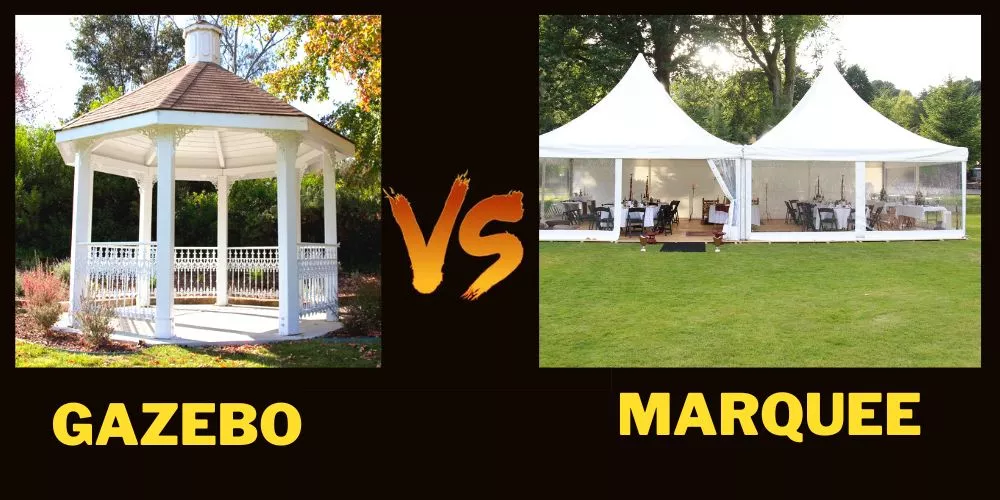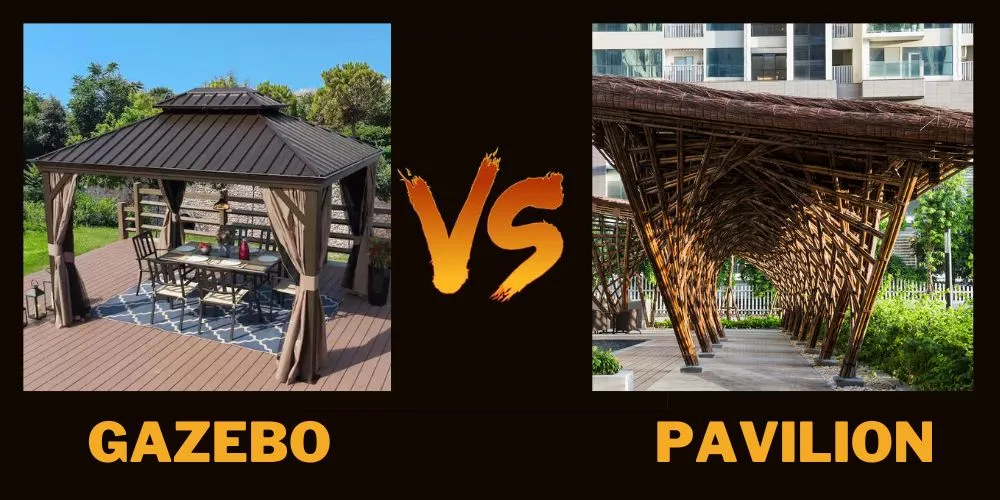There’s nothing like having a dedicated space outdoors to relax and entertain.
Palapas and gazebos are two of the top choices for many homeowners, but picking between them can be a challenge. Get it wrong, and you might find yourself with an expensive structure that doesn’t fit your needs or lifestyle.
Don’t worry – we’ve got your back. This article dives into the essentials of the palapa vs gazebo discussion.
We’ll break down the pros and cons of each, so by the end, you’ll know exactly which one is right for your space.
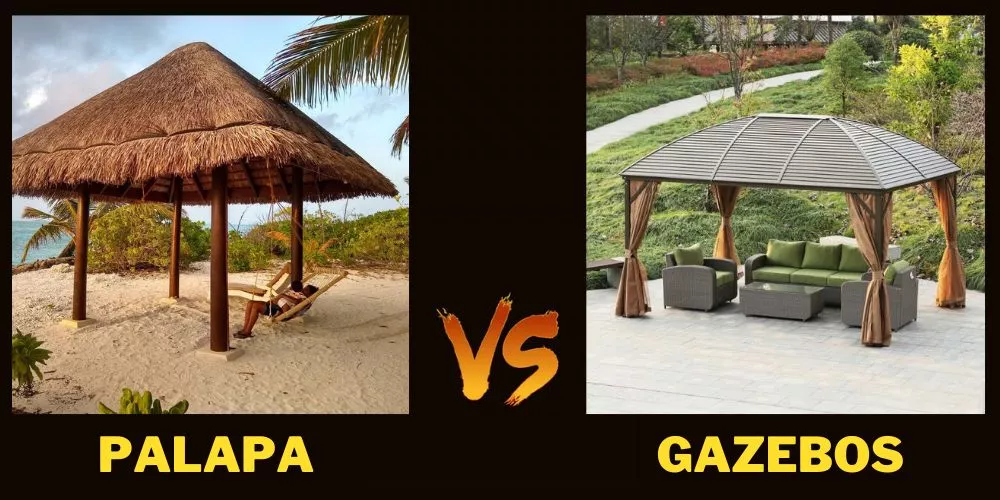
Palapas: An In-Depth Look
Diving into the world of outdoor structures, palapas stand out with their distinctive tropical vibe and thatched roofs. Let’s take a closer look at what makes these shelters unique and their appeal in modern backyards.
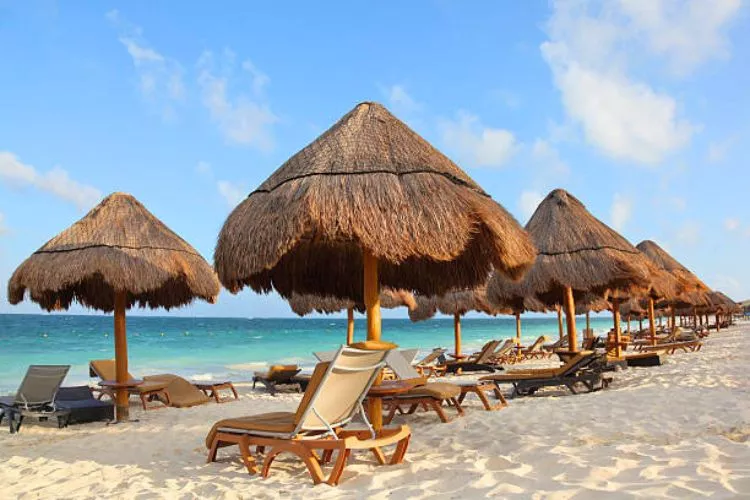
Define what a palapa is
A palapa is an open-sided structure characterized by a roof made of dried palm leaves or thatch. Unlike enclosed spaces, it offers shade while allowing a gentle breeze to flow through, making it a popular choice in warmer climates.
Origin and cultural significance
The palapa has roots in indigenous cultures of tropical regions, especially in places like Mexico and the Pacific Islands. Historically, these structures were not just functional – providing shade and shelter from the tropical sun – but also held cultural significance.
In many indigenous communities, palapas served as communal spaces for gatherings, ceremonies, and daily activities.
Over time, their aesthetic appeal and functionality made them a sought-after addition in resorts and homes outside these regions, blending a touch of tropical flair with practical outdoor living.
Materials used in palapa construction (thatch, bamboo, etc.)
Palapas primarily utilize natural materials that align with their tropical origins. The most distinguishing feature is the thatched roof, typically crafted from dried palm leaves. The support poles, on the other hand, can be made from materials like bamboo, hardwood, or even pressure-treated lumber for added durability.
These natural materials not only provide authenticity to the palapa’s design but also promote sustainability.
Pros of choosing a palapa
A palapa isn’t just about aesthetics; there are tangible benefits to incorporating one into your outdoor space.
- Tropical Aesthetics: Palapas instantly bring a slice of the tropics to your backyard. Their natural materials and design transport you to beachfront resorts, even if you’re miles from the ocean.
- Natural Cooling Effect: Thanks to its open design and thatched roof, palapas offer a shaded area without trapping heat, allowing for a refreshing, natural cooling effect even on the hottest days.
- Customization Options: While the traditional palapa has a distinctive look, there’s room for personal touches. From the size to the shape and even additional features like built-in seating or bars, your palapa can be as unique as you wish.
Cons of choosing a palapa
However, like all things, there are some considerations to keep in mind when opting for a palapa.
- Maintenance Requirements: The natural materials of palapas, especially the thatched roof, require regular maintenance to keep them looking fresh and to extend their lifespan. This could include periodic re-thatching or treating the wood to prevent decay.
- Vulnerability to Pests and Weather: Being primarily constructed from organic materials, palapas can be susceptible to pests, especially in areas prone to termites. Additionally, while they’re designed to be sturdy, extreme weather conditions could pose a threat, especially if the palapa isn’t adequately secured or maintained.
- Limited Privacy: By design, palapas are open, meaning they don’t provide the same level of privacy as more enclosed structures. If privacy is a top priority, some modifications or additions might be necessary.
Gazebos: A Comprehensive Overview
Stepping away from the tropical vibe of palapas, gazebos offer a classic touch to outdoor spaces, combining elegance with versatility. In this section, we’ll delve into the charm, construction, and considerations of these timeless structures.
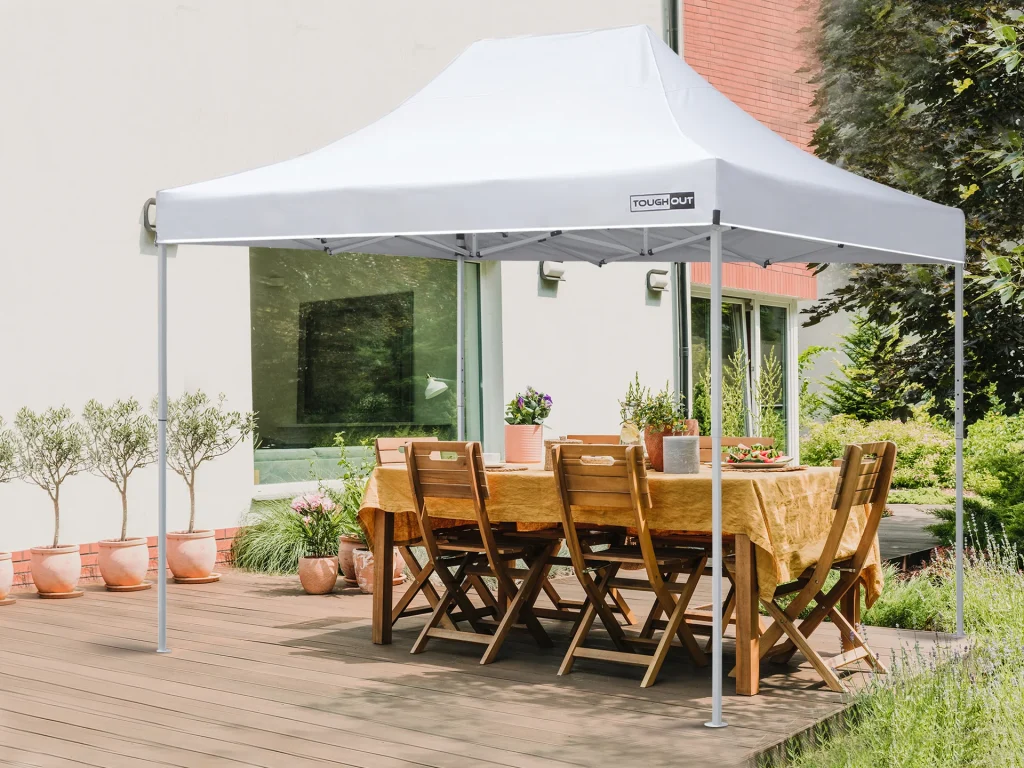
Define what a gazebo is
A gazebo is a freestanding, pavilion-like structure, often octagonal or circular in shape, with a solid roof and open sides. It serves as a decorative feature in gardens, parks, and backyards, offering shade and a place to rest, relax, or even entertain.
Historical background and architectural styles
Gazebos have a rich history that traces back to ancient civilizations like Egypt and Rome. In these cultures, they served as temple-like structures, places of relaxation, or viewing spots in gardens. During the Renaissance, gazebos gained popularity across Europe, especially in English and French gardens. Over time, they evolved in design and purpose.
Today, there are various architectural styles of gazebos, ranging from Victorian, Asian-inspired, to rustic and contemporary. Each style brings its own flair, reflecting different periods and cultural influences, making the gazebo a versatile and timeless piece in landscape design.
Materials used in gazebo construction (wood, metal, vinyl, etc.)
When it comes to gazebos, a variety of materials are employed, each bringing its own aesthetic and practical advantages. Common materials include:
- Wood: Often preferred for its classic, natural look. Varieties like cedar and redwood are popular due to their durability and resistance to decay.
- Metal: Provides a more modern touch and is typically more durable than wood, with common types including aluminum and steel.
- Vinyl: A low-maintenance option that resists rot and decay. It’s an excellent choice for those who want the look of wood without the upkeep.
Pros of choosing a gazebo
Gazebos have stood the test of time for several reasons:
- Durability: Built with solid materials and a closed roof, gazebos can withstand varying weather conditions, from sun to rain, ensuring a longer lifespan.
- Versatility in Design: Whether you lean toward a classic Victorian look or a sleek modern design, gazebos can be tailored to match any aesthetic or garden theme.
- Weather Resistance: Thanks to their sturdy construction and roofing, gazebos offer protection against the elements, be it the glaring sun or unexpected rain showers.
Cons of choosing a gazebo
While gazebos offer numerous benefits, there are considerations:
- Higher Initial Cost: Given their materials and intricate designs, gazebos often come with a heftier price tag compared to simpler structures.
- Limited Tropical Aesthetics: If you’re aiming for a beach or island feel, gazebos might not naturally fit the bill due to their more traditional appearance.
- Potential Need for Permits: Depending on where you live, building a gazebo might require permits, especially for larger or more permanent structures. This can add time and additional costs to your project.
Palapa vs Gazebo: Key Differences
While both palapas and gazebos provide elegant solutions for outdoor spaces, their distinctions go beyond mere aesthetics. Delving into their unique characteristics can help inform a more tailored choice.
In this section, we’ll unpack the essential differences between these two beloved structures, setting the stage for a well-informed decision.
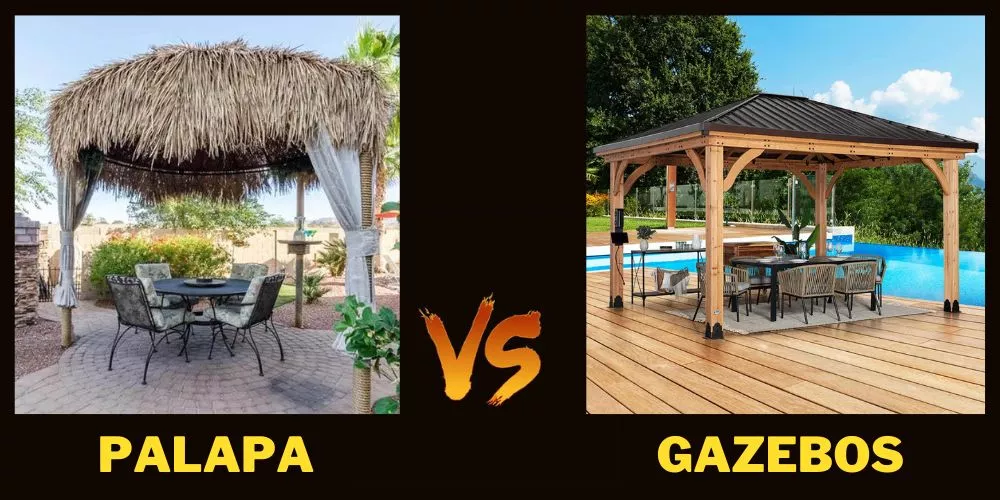
Aesthetic differences: Tropical vs. traditional
- Palapas: When you envision a beachside resort or a serene island getaway, a palapa might come to mind. With its signature thatched roof and simplistic open design, a palapa screams tropical. It’s as if you’re on vacation every time you step into your backyard. The structure blends seamlessly with nature, adding to its charm and giving off that relaxed, laid-back vibe.
- Gazebos: In contrast, gazebos speak a language of tradition and elegance. Their structured design, often with detailed railings, decorative trims, and a solid roof, leans more toward a classic garden setting. Whether nestled amongst blooming flowers in an English garden or standing tall in a contemporary landscape, gazebos ooze sophistication and formality.
Materials
- Palapas: The natural, organic materials dominate the construction of palapas. Thatched roofs, usually crafted from dried palm leaves, are the star of the show. Supporting poles can be made of bamboo, hardwood, or even treated lumber. These materials not only ensure an authentic look but also reflect the eco-friendly essence of the structure.
- Gazebos: A broader range of materials is at play when it comes to gazebos. From sturdy woods like cedar and redwood to metals like aluminum and steel, choices abound. Some even opt for vinyl, which mimics the look of wood but demands less maintenance. Each material choice can influence the gazebo’s appearance, longevity, and overall feel.
Size
Palapas
One of the appealing features of palapas is their flexibility in size. Small palapas can create cozy spots for a pair of lounge chairs, perfect for a personal relaxation nook. On the other hand, larger ones can house a full outdoor bar, dining tables, and more.
Given their open structure and the absence of walls, palapas can be expanded relatively easily to accommodate more people, making them adaptable to various functions.
- Small Palapas (6-8 feet/1.8-2.4 meters in diameter): Ideal for compact spaces, these can comfortably shade a couple of sun loungers or a small seating area, providing a quaint spot for reading or enjoying a cold drink.
- Medium Palapas (10-12 feet/3-3.7 meters in diameter): With a bit more space, they can accommodate a small outdoor dining set or a hammock alongside a seating area, making it perfect for family lounging.
- Large Palapas (15-20 feet/4.6-6.1 meters and above in diameter): Suited for those who love to entertain, these can house an outdoor kitchen, a full-sized bar, or multiple seating zones. It’s like having an outdoor living room, right in your backyard.
Gazebos
Gazebos are also diverse in size, but they often lean towards being more structured and defined. They can range from quaint, intimate spaces perfect for a couple’s retreat to large, spacious structures fit for hosting events.
The solid roof and potential presence of railings or half-walls can make gazebos feel more enclosed, offering a defined space separate from the rest of the garden or yard.
- Small Gazebos (8×8 feet/2.4×2.4 meters): Perfect for creating a cozy corner in your garden. Ideal for a bistro table and chairs, this size offers an intimate setting for morning coffee or late-night chats.
- Medium Gazebos (10×12 feet/3×3.7 meters or 12×14 feet/3.7×4.3 meters): These provide ample space for a standard outdoor dining set or a comfortable lounge area with sofas and a coffee table.
- Large Gazebos (16×20 feet/4.9×6.1 meters and above): For those who regularly host events or have larger families, these can fit a combination of dining and seating areas, maybe even an outdoor fireplace or a built-in BBQ station.
Durability and maintenance
Palapas
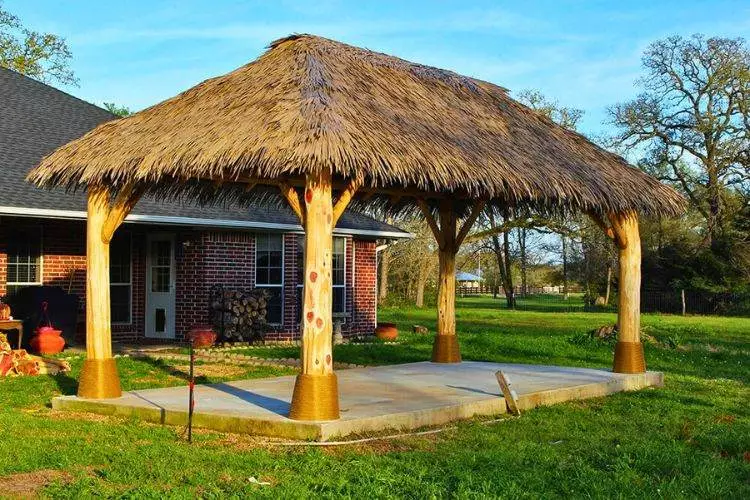
One of the undeniable charms of palapas is their organic, rustic feel. However, this also means they might require more upkeep. The thatched roofs, while offering a cooling shade, can be susceptible to wear and tear, especially in areas with frequent rain or high humidity.
They may also attract pests or birds. Maintenance often involves periodic checks for mold, mildew, or any signs of infestation. Despite this, with proper care, a palapa can last many years and retain its tropical allure.
Gazebos
Gazebos, depending on their material, can offer robust durability. Wood, especially if treated or a type resistant to decay like cedar, can last for years with minimal maintenance.
Metal structures, like those made of aluminum, resist rust and stand strong against the elements. Of course, maintenance needs vary. Wooden gazebos might need occasional staining or sealing, while metal ones might benefit from checks for paint chips or any signs of corrosion. But on the whole, gazebos tend to demand less frequent care than palapas.
Customization and design options
Palapas
Palapas, rooted in tropical aesthetics, offer significant customization in design:
- Roof Design: From simple, single-tiered roofs to more elaborate, multi-tiered or peaked designs, palapas can be tailored to suit various looks.
- Pole Choices: While bamboo and treated wood are common, you can also opt for decorative carved poles to give an added touch of elegance.
- Accessories: Hanging bamboo lights, fans, or even woven hammocks can further enhance the tropical vibe of a palapa.
Gazebos
With a history spanning various cultures, gazebos come with a plethora of design options:
- Roof Styles: From flat to gabled, pagoda-style to domed – there’s no dearth of choices when it comes to roofing.
- Materials: Beyond the traditional wooden styles, there are vinyl gazebos, wrought iron ones, or even those made from modern synthetic materials.
- Add-Ons: Incorporate built-in seating, mesh screens for bug protection, or even glass walls for a semi-greenhouse effect in colder climates.
Climate suitability: Hot and humid vs. varied climates
Palapas
Primarily designed for tropical climates, palapas excel in:
- Hot and Humid Climates: The thatched roof provides a natural cooling effect, allowing hot air to rise and escape, ensuring the area underneath remains cool.
- Beachfront Properties: Their origin from coastal areas means they blend seamlessly with beachfronts, providing that quintessential tropical vibe.
However, in areas with heavy rainfall or snow, a palapa’s roof may require more frequent maintenance or replacements.
Gazebos
Gazebos, on the other hand, are versatile structures suitable for a broader range of climates:
- Temperate Climates: With options like a solid roof and the possibility of walls or screens, gazebos can offer shelter against light rain and winds.
- Cold Climates: For snowy regions, gazebos with sturdier roofs (especially sloped designs) can handle the weight of snow better than the flat, thatched roofs of palapas.
- Mixed Climates: In areas that see a mix of sunny, rainy, and snowy days, gazebos, especially those made from weather-resistant materials, can provide a year-round retreat.
Privacy and shelter considerations
Palapas
The open design of a palapa prioritizes airflow over privacy. Here’s what to expect:
- Natural Shelter: Its thatched roof offers shade and some degree of rain protection, although during heavy downpours, water may seep through.
- Limited Privacy: Due to its open sides, palapas don’t inherently provide much privacy. However, you can enhance seclusion with strategically placed plants or by adding side curtains.
Gazebos
Gazebos, with their structured designs, can be both shelters and private retreats:
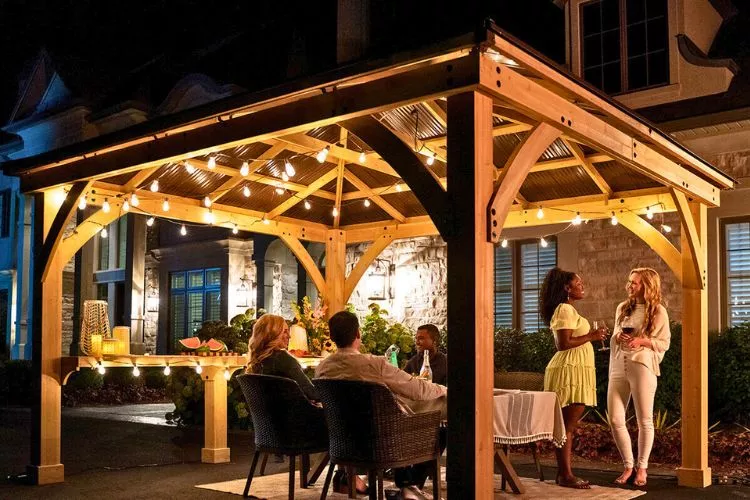
- Robust Shelter: With a solid roof, a gazebo offers better protection from rain, sun, and even light snow.
- Enhanced Privacy: Many gazebos come with options for side walls, drapes, or screens, making them suitable for private events or intimate moments.
Use Cases
Palapas
- Beachfront Bars: Think of those tropical resorts where you sip on your piña colada, the sea breeze in your hair, all under a palapa.
- Poolside Shade: Offering a respite from the sun, palapas are a perfect poolside addition for those wanting to recreate a tropical getaway at home.
- Meditation or Yoga Spots: With their natural aesthetics, they can be a serene backdrop for mindfulness activities.
Gazebos
- Garden Centerpiece: Plant some roses, set up a few benches, and you’ve got yourself a beautiful, shaded garden nook.
- Event Hosting: From small weddings to family BBQs, the enclosed nature of gazebos makes them ideal for gatherings.
- Spa Enclosures: Ever considered an outdoor hot tub? A gazebo can offer privacy and shelter, turning your backyard into a luxurious spa retreat.
Both structures, while having their distinct advantages, can be adapted for a variety of functions. Your choice largely depends on the primary use you have in mind.
Factors to Consider When Choosing Between Palapas and Gazebos
Selecting between a palapa and a gazebo can be more intricate than simply choosing between tropical charm and classical elegance. A variety of aspects come into play, from budget to climate. In this section, we’ll delve into the crucial considerations to guide your decision-making.
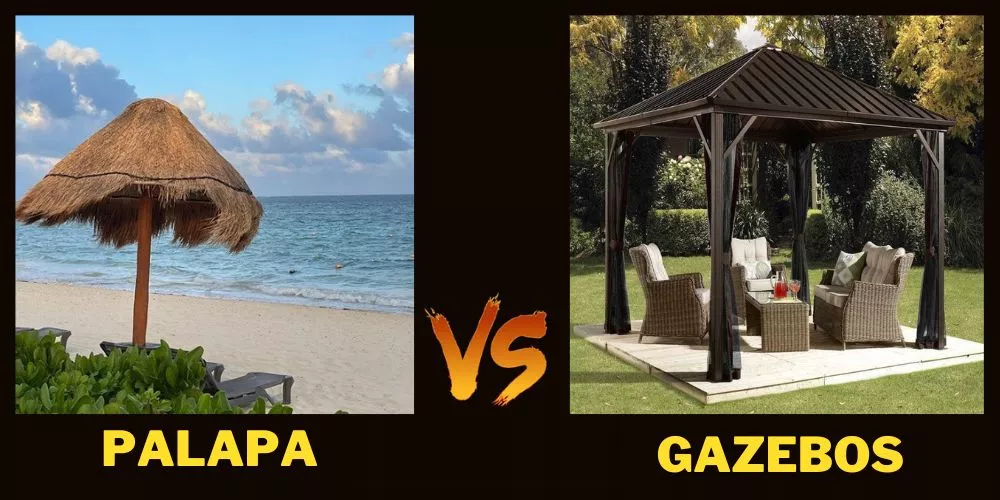
Budget constraints
Palapas
- Initial Cost: Palapas, primarily when using natural materials like bamboo and thatch, can be more affordable initially than some high-end gazebos. However, importing authentic materials can increase costs.
- Maintenance Costs: While the upfront price might be lower, frequent maintenance due to wear and tear, especially from weather conditions, can add up over the years.
Gazebos
- Initial Cost: Gazebos, especially those crafted from durable materials like metal or quality wood, can come with a heftier price tag. But remember, you’re investing in longevity.
- Maintenance Costs: With regular care, a gazebo can last many years with minimal upkeep expenses, especially if made from durable materials like vinyl or metal.
Climate and location
Palapas
- Ideal for: Tropical and temperate climates. The open design encourages airflow, making them perfect for areas with hotter temperatures. However, in rainy regions, a palapa may not provide adequate shelter.
- Not Ideal for: Locations with heavy snowfall. The thatched roof might not bear the weight, and cold winds can make it less cozy.
Gazebos
- Ideal for: A broader range of climates. Whether you’re in a region with intense summers, rainy springs, or snowy winters, a well-constructed gazebo can withstand diverse weather patterns.
- Not Ideal for: Extremely windy coastal areas if not anchored correctly. However, proper installation and materials can mitigate this issue.
Intended use (relaxation, dining, hosting events)
The purpose behind your outdoor structure can greatly influence your decision:
Palapas
- Relaxation: A palapa can transport you to a tropical paradise, making it the ideal space to lounge, read a book, or take a nap in a hammock.
- Dining: While you can certainly dine under a palapa, it’s best suited for casual meals and drinks rather than formal dinners.
- Hosting Events: Palapas can set the stage for themed parties and beach-inspired events. However, they’re less versatile for occasions requiring more shelter or formal settings.
Gazebos
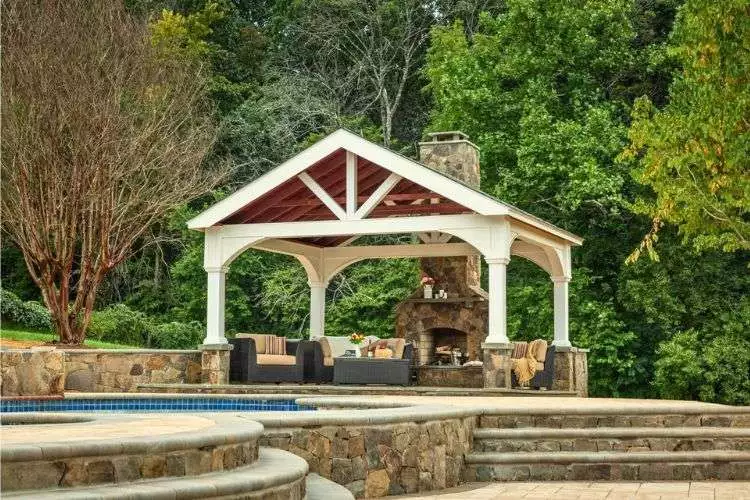
- Relaxation: With their solid roofs and potential for screened walls, gazebos provide a tranquil space for relaxation in a broader range of weather conditions.
- Dining: Gazebos can accommodate anything from casual brunches to elegant evening dinners, offering protection against unpredictable weather.
- Hosting Events: From weddings to birthday parties, gazebos are versatile structures that can be decorated and adapted for various events.
Maintenance commitment
An outdoor structure is an investment, and like any investment, it requires care and upkeep. The level of maintenance commitment differs between palapas and gazebos, so it’s essential to factor this into your decision.
Palapas
- Thatch Inspection: The thatched roof of a palapa needs regular inspection for signs of decay, mold, or pest activity.
- Periodic Replacement: Thatch, being a natural material, can wear out faster than synthetic roofing options. Depending on your location and weather conditions, you might need to replace the thatch every few years.
- Weather Damage: Palapas are susceptible to weather damage, especially in areas with heavy rainfall or frequent storms. Ensure water doesn’t accumulate on the roof and check for loose or damaged supports post-storm.
Gazebos
- Structural Checks: For wooden gazebos, annual checks for signs of wood rot or pest infestation are necessary.
- Painting and Staining: Wooden gazebos benefit from periodic staining or painting to protect against the elements and maintain their aesthetic appeal.
- Roof Maintenance: Depending on the roofing material (e.g., shingles, metal), you might need to inspect for damage, clean off debris, or even replace worn-out parts occasionally.
Design preferences
Your personal aesthetics play a significant role in the choice between palapas and gazebos. Each structure carries its unique design elements, so aligning them with your taste and home’s architectural style is essential.
Palapas
- Tropical Vibes: If you’re looking to recreate that beachside, tropical ambiance, palapas are your go-to. Their thatched roofs and open structure evoke images of island getaways and coastal retreats.
- Openness and Connection with Nature: Palapas typically offer a less obstructed view of the surroundings, making you feel more connected to the outdoors.
- Less Formality: Their casual, laid-back design can make your outdoor space feel relaxed and inviting.
Gazebos
- Elegance and Sophistication: Gazebos can range from simple to ornate, but they often carry an air of formality and classic beauty.
- Defined Spaces: Unlike the open design of palapas, gazebos create a more defined outdoor room, which can be particularly suitable for gardens or structured landscapes.
- Versatility in Styles: Whether you’re leaning towards a Victorian design, a rustic log cabin style, or a sleek modern look, there’s likely a gazebo design to match.
Local regulations and permits
Before erecting any outdoor structure, it’s vital to be informed about the local regulations and permit requirements in your area. Neglecting this step can result in penalties, fines, or even the need to dismantle your newly built structure. Here’s a closer look:
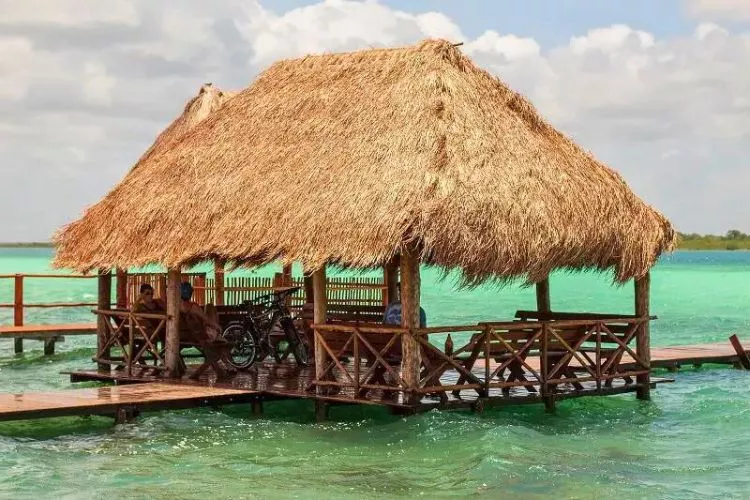
Palapas
- Building Codes: Some localities may classify palapas as temporary structures, which could mean fewer regulations. However, this isn’t universal, so always check.
- Fire Safety: Given that palapas use thatch, a flammable material, there might be specific fire safety regulations in place, especially in areas prone to wildfires.
- Height and Size Restrictions: Depending on your jurisdiction, there might be restrictions on how tall or wide a palapa can be, especially if it’s close to property lines.
Gazebos
- Zoning Laws: Gazebos are often considered permanent structures. This means they can be subject to stricter zoning laws related to setbacks, lot coverage, and height.
- Material Regulations: Some localities might have guidelines on the type of materials used, especially if you’re in a historic district or an area with specific architectural aesthetics.
- Permitting Process: Erecting a gazebo often requires a building permit. You’ll likely need to submit detailed plans, show adherence to safety codes, and possibly undergo inspections during or after construction.
Before committing to either a palapa or gazebo, visit your local municipal or county office. They can provide information on necessary permits, zoning laws, and any other restrictions. It’s always better to be informed and prepared than to face unwanted surprises down the road.
Pro Tips for Making Your Choice
Navigating the choice between a gazebo and a palapa can be daunting. To help steer you towards an informed decision, here are some professional insights:
- Consult with a Professional Contractor or Architect: Tapping into the expertise of industry professionals can save you time and money. They can offer insights about which structure fits best with your property’s layout, soil type, and other vital considerations.
- Consider the Long-Term Investment and Durability: Beyond initial costs, think about longevity. While palapas offer a relaxed feel, they may require more upkeep than the more sturdy gazebo. Investing more upfront might save you in maintenance costs later.
- Research Local Regulations and Permitting Requirements: Before embarking on construction, ensure you’re aware of local building codes, zoning restrictions, and required permits. This can prevent unexpected costs or the headache of having to modify or remove your structure later.
- Think About Your Intended Use and Climate Conditions: Is your primary purpose relaxation, dining, or hosting large events? Your answer could sway your choice. Also, consider the climate. For instance, if you’re in a rainy area, a gazebo might offer better protection.
- Don’t Overlook the Importance of Aesthetics and Personal Style: Ultimately, your outdoor space should be a reflection of your personal style. Whether you gravitate towards the traditional elegance of a gazebo or the beachy, laid-back vibe of a palapa, ensure your choice resonates with your aesthetic preferences.
Frequently Asked Questions (FAQs)
Can a gazebo withstand harsh weather conditions?
Yes, gazebos, especially those made of durable materials like metal, can endure harsh weather conditions. Regular maintenance enhances their resilience.
Which option is more cost-effective in the long run?
Gazebos generally have a longer lifespan, making them more cost-effective over time. Palapas may require more frequent maintenance.
Which option is better for hosting outdoor parties?
Both are suitable. Gazebos offer more shelter and structure, while palapas provide a relaxed tropical ambiance.
What are the typical lifespan differences between palapas and gazebos?
Palapas last about 5-15 years, depending on maintenance. Gazebos can last several decades with proper care.
Can I combine the features of both structures in one outdoor space?
Absolutely! Many homeowners blend palapa’s tropical vibe with a gazebo’s durability to create a unique outdoor retreat.
Conclusion:
In summary, both palapas and gazebos offer unique benefits for outdoor spaces. While palapas evoke a tropical ambiance and natural cooling, gazebos stand out for their durability and varied design.
Choosing between them requires a thorough understanding of your preferences, location, and intended use. Remember, the key is to align your choice with your needs, ensuring your outdoor space becomes a true retreat.
We hope that this guide has been helpful. You can read about similar topics here on our website. Check back again soon for more.

